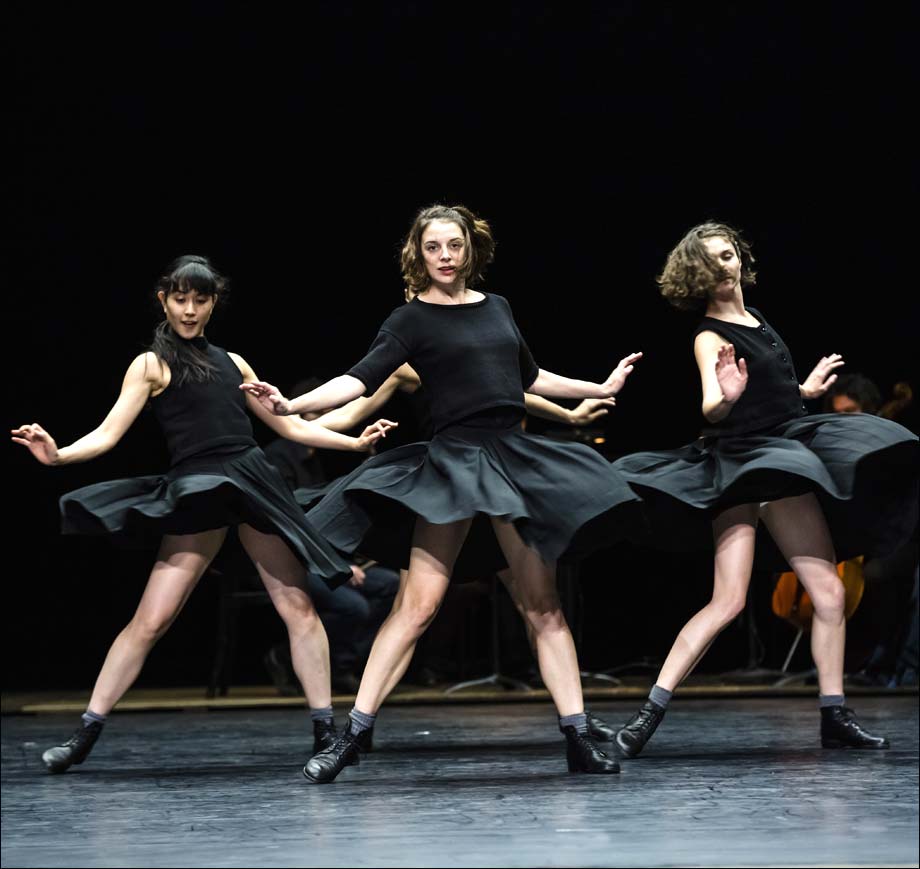
Anne Teresa De Keersmaeker
アンヌ·テレサ·ドゥ·ケースマイケル
АННЫ ТЕРЕЗЫ ДЕ КЕЕРСМАКЕР
Quatuor N°4
The movement vocabulary of “Quartet No. 4” (originally part of a longer evening, “Bartok/Annotations”) is simple, with elaborations on walking and turning movements that incorporate everyday motion (smoothing hair, opening out the hands, a quick unpolished handstand) and folk dance-like skipping, hopping and heel-clicking jumps.



